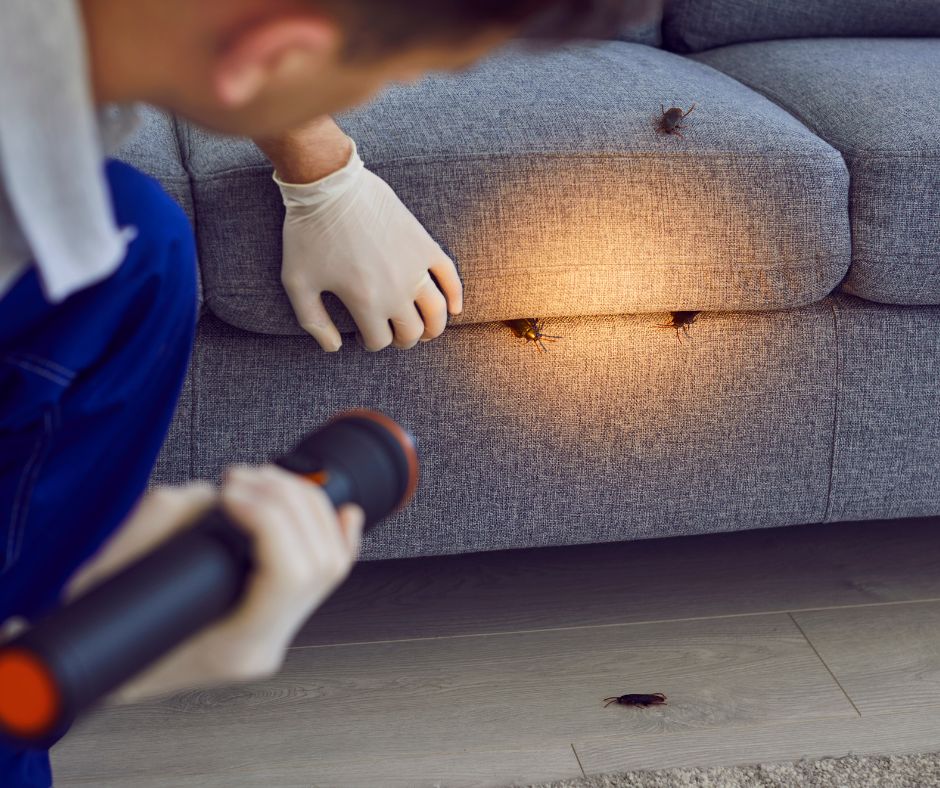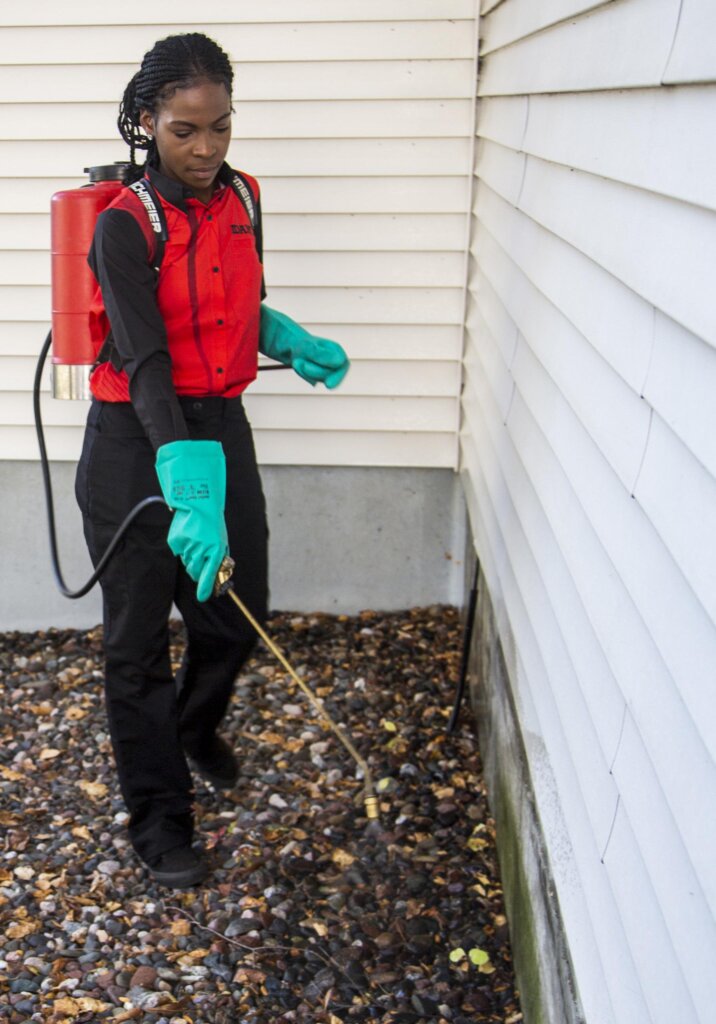Affordable and Reliable Exterminator in Port Charlotte for All Your Needs
Affordable and Reliable Exterminator in Port Charlotte for All Your Needs
Blog Article
Learn More About the most up to date Advances in Insect Control and How to Implement Effective Treatment Solutions
In recent times, the area of pest control has experienced considerable improvements, driven by the requirement for lasting and effective therapy options. Cutting-edge techniques such as Integrated Bug Monitoring (IPM) combine green practices with sophisticated innovation, boosting both efficacy and environmental responsibility. The combination of clever innovations and DIY approaches has actually encouraged individuals to tackle parasite concerns a lot more successfully. As we explore these advancements, it becomes necessary to recognize just how best to carry out these strategies in various settings to achieve optimum results. The implications for bug monitoring methods could be transformative.
Eco-Friendly Insect Control Options
Recently, the need for eco-friendly pest control choices has risen as companies and homeowners alike look for sustainable choices to typical chemical therapies. This shift is driven by growing ecological awareness and a wish to lessen the wellness threats connected with synthetic pesticides.

Environment-friendly insect control techniques incorporate an array of techniques that focus on using natural materials and methods. Integrated Insect Management (IPM) is one such method, incorporating organic, cultural, and mechanical tactics to handle parasite populations while lowering reliance on chemicals (Wildlife removal services). This holistic method stresses avoidance with habitat control and the intro of all-natural killers, therefore cultivating a balanced ecosystem
Another prominent alternative is making use of agricultural pesticides stemmed from plants, which have a tendency to be much less damaging to non-target microorganisms. Products like neem oil and diatomaceous planet have acquired grip for their performance in controlling insects while presenting minimal threats to human health and the environment.
In addition, exemption methods, such as sealing entry factors and preserving tidiness, play a crucial function in environment-friendly insect monitoring. By adopting these sustainable techniques, people and organizations can successfully handle bugs while promoting a much healthier world for future generations.
Smart Modern Technology in Bug Management
Technology is reshaping the landscape of pest administration, with wise innovation emerging as a critical force in improving efficiency and effectiveness - Wildlife removal services. The integration of Internet of Points (IoT) gadgets, expert system (AI), and data analytics is reinventing just how parasite control specialists approach infestations
Smart catches geared up with sensors can spot insect activity in real-time, sending out instant signals to drivers. This enables for prompt actions, lessening damage and minimizing the need for comprehensive therapies. In addition, AI algorithms examine historic data to predict parasite habits, making it possible for proactive treatments based on environmental conditions and infestation patterns.
Drones and computerized vehicles are likewise playing a significant duty in pest administration, supplying aerial evaluations of huge locations, identifying hotspots, and also distributing targeted treatments. These innovations not only improve operations but additionally boost safety and security by limiting human exposure to potentially hazardous chemicals.
In addition, mobile applications equip customers to keep an eye on insect activity and gain access to specialist advice, promoting a joint approach to pest monitoring. Overall, the adoption of clever innovation is establishing a brand-new standard in parasite control, stressing data-driven choices and sustainable methods that eventually profit both property owners and experts alike.
Integrated Bug Monitoring Approaches
Integrated Parasite Administration (IPM) employs an all natural approach to pest control, integrating different approaches to successfully handle insect populations while minimizing risks to human health and the atmosphere. IPM focuses on understanding the pest life process, their all-natural opponents, and the ecosystem in which they flourish.
Among the fundamental components of IPM is keeping an eye on pest populaces through normal evaluations and data collection. This permits the recognition of bug limits, figuring out when treatment is essential. Cultural practices, such as crop habitat, sanitation, and turning manipulation, are important in decreasing pest occurrence house bug control and advertising plant wellness.
Mechanical controls, consisting of traps and barriers, are additionally important in IPM. These approaches can physically eliminate or prevent bugs without using chemicals. When required, the wise application of chemical controls is utilized, concentrating on targeted therapies that lessen ecological impact.
Education and cooperation among stakeholders, including farmers, parasite control specialists, and the community, are vital for the successful execution of IPM techniques. By focusing on sustainable methods, IPM not just addresses pest concerns yet likewise promotes a healthier ecosystem.
Biological Control Techniques
Various biological control methods are increasingly acknowledged for their performance in taking care of bug populaces while advertising eco-friendly balance. These strategies harness natural predators, bloodsuckers, and virus to reduce pest numbers without counting on synthetic chemicals. The introduction of ladybugs can successfully regulate aphid populations, while nematodes target soil-dwelling bug larvae.
Additionally, the usage of microbial pesticides, such as Bacillus thuringiensis (Bt), offers an eco-friendly alternative for handling caterpillar insects. These items especially target pest species, reducing harm to advantageous insects and pollinators. Furthermore, conservation biological control highlights enhancing habitats for natural opponents, such as birds and helpful insects, thus motivating their visibility in farming systems.
Research study remains to reveal cutting-edge approaches within this area, such as making use of pheromones to interfere with pest breeding patterns or the development of biocontrol agents via hereditary engineering. Carrying out these methods can result in lasting pest management methods that alleviate the dependence on chemical interventions, eventually promoting much healthier environments. As understanding of these techniques grows, they are becoming essential components of integrated insect monitoring (IPM) methods, using a balance in between reliable bug control and ecological stewardship.
DIY Insect Control Solutions
As house owners seek efficient means to tackle parasite problems, do it yourself bug control options have gotten popularity for their access and cost-effectiveness. These techniques equip individuals to deal with invasions making use of easily available products and techniques, frequently without the requirement for professional intervention.

Furthermore, preserving proper sanitation and routine assessments can prevent parasite entrance and nesting (Wildlife removal services). Easy techniques, such as securing fractures, removing food sources, and decluttering, can significantly reduce pest populations. Traps, both homemade and readily offered, can additionally supply reliable solutions for surveillance and managing certain pests like rats or pests

Conclusion
The combination of green pest control choices, wise technology, and ingenious house bug control management techniques provides a detailed technique to effective insect monitoring. By welcoming Integrated Insect Monitoring (IPM) and making use of organic control methods, together with DIY services, lasting and accountable parasite control can be achieved. These developments not only enhance the effectiveness of insect administration practices however additionally add to a healthier setting. Implementing these techniques promotes a well balanced environment while efficiently attending to pest populaces.
Environment-friendly insect control techniques incorporate an array of strategies that focus on the use of natural substances and practices. Integrated Pest Management (IPM) is one such method, combining biological, social, and mechanical techniques to handle insect populaces while decreasing dependence on chemicals. As recognition of these techniques grows, they are becoming indispensable parts of incorporated parasite management (IPM) strategies, supplying a balance between effective parasite control and environmental stewardship.
The integration of environment-friendly pest control choices, wise modern technology, and innovative administration methods presents a detailed approach to efficient bug management. By embracing Integrated Parasite Monitoring (IPM) and making use of organic control techniques, together with Do it yourself services, accountable and sustainable bug control can be attained.
Report this page